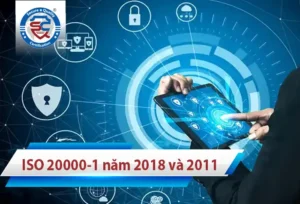ISO 22000 is an international standard. The standard combines ISO 9001 with food safety management and HACCP (hazard analysis and critical control points) to ensure food safety at all levels. The ISO 22000 standard specifies how an organization can demonstrate its ability to control hazards to ensure that food is safe.
ISO 22000 can be applied to any organization / business in the food supply chain. The organization / business in food supply chain applying and obtaining ISO 22000 certification is recognized as a unit with a good food safety management system and ensure the supply of safe, high quality food products, intake for consumer
Organizations / businesses that can apply ISO 20000 include:
* Enterprise producing and processing fodder.
* Enterprises processing vegetables, tubers, fruits, eggs, milk, seafood.
* Spices manufacturing and processing enterprises.
* Enterprises manufacturing functional foods: for the elderly, children, the sick.
* Enterprise producing and processing fresh water, purified water, wine, coffee, tea, ..
* Food carriers.
* Enterprises producing, processing ready-made food, restaurants.
* Supermarket system, wholesale and retail.
* Enterprise producing food packaging materials.
* Farming and livestock farming










